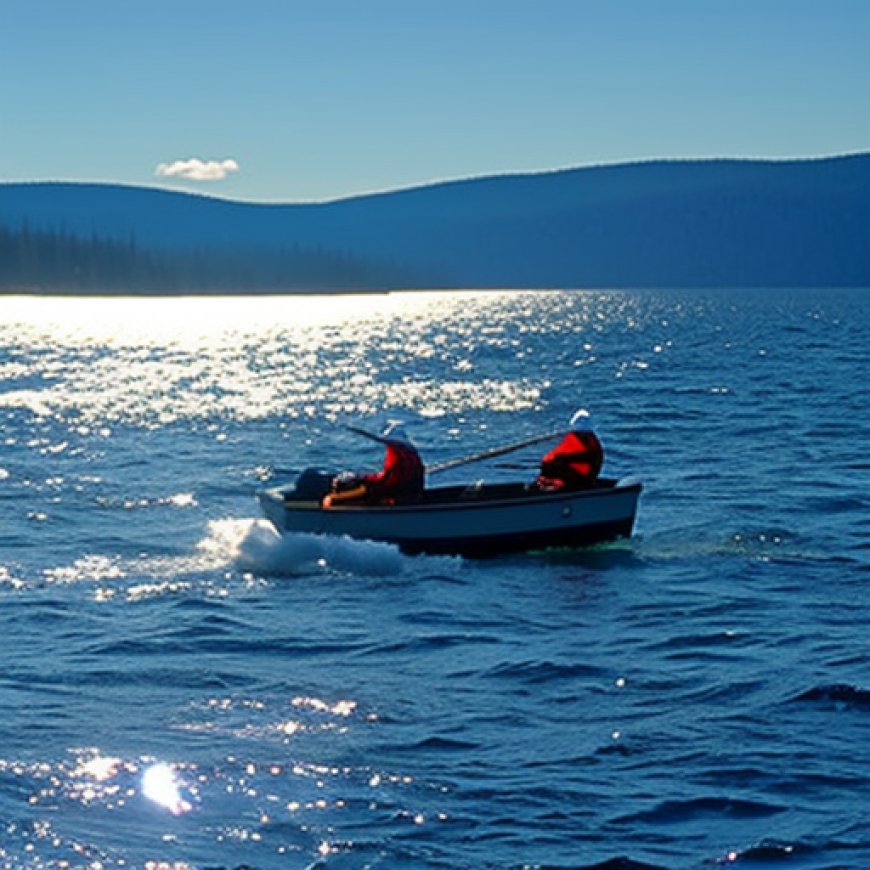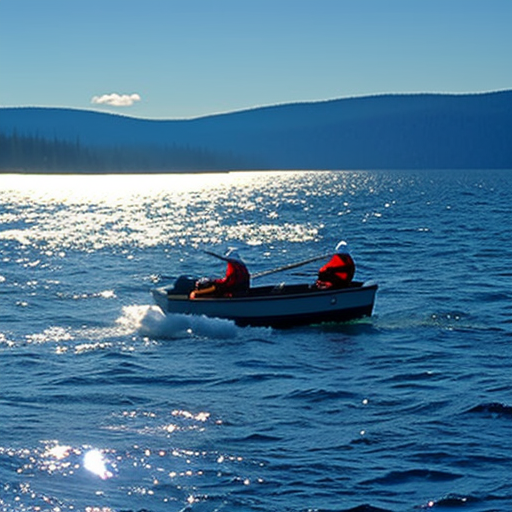Entering this year’s fishing season, Oceana Canada Urges Canadian Government to Finally Address 30-Year Fisheries Crisis as Climate Change and Biodiversity Loss Accelerate
Entering this year's fishing season, Oceana Canada Urges Canadian Government to Finally Address 30-Year Fisheries ... Yahoo Finance


Oceana Canada

Better management could bring unparalleled value to coastal communities, seafood industries and the planet
OTTAWA, traditional, Unceded Territory of the Algonquin Anishnaabeg People, March 20, 2024 (GLOBE NEWSWIRE) — Since the collapse of cod and other groundfish in Atlantic Canada more than 30 years ago, communities continue to be shortchanged by overfishing and widespread fisheries mismanagement.
Heading into the 2024 fishing season, less than one-third of Canada’s wild fisheries are considered healthy and most critically depleted fish populations have no plan in place to rebuild them to healthy levels.
Canada’s continued failure to address the ongoing fisheries crisis has devastating consequences for people and the planet, fueling continued food and economic insecurity for many front-line fishing communities and undermining our global seafood economy. The situation is becoming more urgent because of accelerating climate change and biodiversity loss.
Sustainable Development Goals (SDGs)
“The state of our fisheries is far from what it could be, and less than we should accept; in fact, staying on our current path will only lead to more losses,” said Rebecca Schijns, Fishery Scientist at Oceana Canada. “We have what it takes to rebuild abundance in the oceans. With the newly modernized Fisheries Act in place, Canada has a window of opportunity right now to step up and become global leaders.”
Despite new federal investments in science and management, the government’s decisions during last year’s fishing season were often delayed and sometimes inconsistent with science advice, making it harder for the fishing industry to respond to changing market and environmental conditions.”
The good news is that rebuilding is already happening in some cases. For example, the return of highly depleted redfish in the Gulf of St. Lawrence to healthy levels after a fishing moratorium and favorable environmental conditions shows that fish can rebound when given the chance. Now, the Canadian government has an opportunity to demonstrate how to successfully re-open a previously collapsed fishery and provide benefits now and for generations to come. The key to this is for DFO to follow its own policies and lay out a clear, measurable plan.
Recommendations for Canada’s Fisheries Management
-
Make management decisions that support healthy wild fisheries:
- Redfish (Unit 1+2): Reopen the redfish fishery once a management plan is developed that includes measures to sustain growth, mitigate bycatch and monitor all catches.
- Northern cod (in NAFO area 2J3KL): Implement and follow the rebuilding plan, including measures to reduce fishing pressure and increase monitoring.
- Mackerel: Ensure the fastest recovery by maintaining the fisheries closure (commercial and bait) and implementing a rebuilding plan.
- Herring (in NAFO area 4T, spring spawners): Implement and follow the rebuilding plan, including maintaining the fisheries closure (commercial and bait) to support recovery to target levels.
- Capelin (in NAFO area 2J3KL): This stock has failed to adequately recover and remains at just nine per cent of its historical biomass. To recover capelin to healthy levels and maintain community use for food and cultural significance, close the commercial fishery and establish management measures that ensure population growth, rather than stagnation.
-
Deliver on the Fisheries Act rebuilding regulations:
- Immediately add at least 60 additional stocks under the Fish Stock Provisions of the Fisheries Act and initiate public consultations to prescribe all remaining fish stocks.
- As required by law, publish rebuilding plans for the 12 highly depleted stocks currently prescribed under the Fish Stock Provisions by April 4, 2024.
-
Modernize fisheries management to reflect commitments to reconciliation and protecting biodiversity:
- Collaborate with Indigenous Peoples to meaningfully include Indigenous Knowledge Systems in fisheries management.
- Use proven climate-adaptive and ecosystem-based approaches to manage fisheries.
- Account for all sources of fishing, including for
SDGs, Targets, and Indicators
1. Which SDGs are addressed or connected to the issues highlighted in the article?
- SDG 14: Life Below Water – The article discusses the collapse of fish populations and the need for sustainable fisheries management.
- SDG 2: Zero Hunger – The article mentions the impact of fisheries mismanagement on food security.
- SDG 8: Decent Work and Economic Growth – The article highlights the economic insecurity faced by fishing communities.
- SDG 13: Climate Action – The article mentions the urgency of the fisheries crisis due to accelerating climate change.
- SDG 15: Life on Land – The article refers to biodiversity loss and the need to protect marine habitat.
2. What specific targets under those SDGs can be identified based on the article’s content?
- Target 14.4: By 2020, effectively regulate harvesting and end overfishing, illegal, unreported and unregulated (IUU) fishing and destructive fishing practices and implement science-based management plans, in order to restore fish stocks in the shortest time feasible.
- Target 2.4: By 2030, ensure sustainable food production systems and implement resilient agricultural practices that increase productivity and production, that help maintain ecosystems, that strengthen capacity for adaptation to climate change, extreme weather, drought, flooding and other disasters and that progressively improve land and soil quality.
- Target 8.3: Promote development-oriented policies that support productive activities, decent job creation, entrepreneurship, creativity and innovation, and encourage the formalization and growth of micro-, small- and medium-sized enterprises, including through access to financial services.
- Target 13.1: Strengthen resilience and adaptive capacity to climate-related hazards and natural disasters in all countries.
- Target 15.5: Take urgent and significant action to reduce the degradation of natural habitats, halt the loss of biodiversity and, by 2020, protect and prevent the extinction of threatened species.
3. Are there any indicators mentioned or implied in the article that can be used to measure progress towards the identified targets?
- Indicator 14.4.1: Proportion of fish stocks within biologically sustainable levels.
- Indicator 2.4.1: Proportion of agricultural area under productive and sustainable agriculture.
- Indicator 8.3.1: Proportion of informal employment in non-agriculture employment.
- Indicator 13.1.1: Number of deaths, missing persons and directly affected persons attributed to disasters per 100,000 population.
- Indicator 15.5.1: Red List Index.
Table: SDGs, Targets, and Indicators
SDGs Targets Indicators SDG 14: Life Below Water Target 14.4: By 2020, effectively regulate harvesting and end overfishing, illegal, unreported and unregulated (IUU) fishing and destructive fishing practices and implement science-based management plans, in order to restore fish stocks in the shortest time feasible. Indicator 14.4.1: Proportion of fish stocks within biologically sustainable levels. SDG 2: Zero Hunger Target 2.4: By 2030, ensure sustainable food production systems and implement resilient agricultural practices that increase productivity and production, that help maintain ecosystems, that strengthen capacity for adaptation to climate change, extreme weather, drought, flooding and other disasters and that progressively improve land and soil quality. Indicator 2.4.1: Proportion of agricultural area under productive and sustainable agriculture. SDG 8: Decent Work and Economic Growth Target 8.3: Promote development-oriented policies that support productive activities, decent job creation, entrepreneurship, creativity and innovation, and encourage the formalization and growth of micro-, small- and medium-sized enterprises, including through access to financial services. Indicator 8.3.1: Proportion of informal employment in non-agriculture employment. SDG 13: Climate Action Target 13.1: Strengthen resilience and adaptive capacity to climate-related hazards and natural disasters in all countries. Indicator 13.1.1: Number of deaths, missing persons and directly affected persons attributed to disasters per 100,000 population. SDG 15: Life on Land Target 15.5: Take urgent and significant action to reduce the degradation of natural habitats, halt the loss of biodiversity and, by 2020, protect and prevent the extinction of threatened species. Indicator 15.5.1: Red List Index. Behold! This splendid article springs forth from the wellspring of knowledge, shaped by a wondrous proprietary AI technology that delved into a vast ocean of data, illuminating the path towards the Sustainable Development Goals. Remember that all rights are reserved by SDG Investors LLC, empowering us to champion progress together.
Source: finance.yahoo.com

Join us, as fellow seekers of change, on a transformative journey at https://sdgtalks.ai/welcome, where you can become a member and actively contribute to shaping a brighter future.







